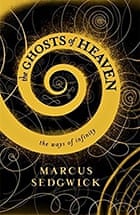Kate Wilson, Managing Director, leads the line-up with a warm and witty welcome, followed by fiction editor, Kirsty Stansfield, who talks about the importance of knowing who you're writing for and having a USP.
She tells to research the market to see what's buoyant but most importantly to realise that trends are cyclical - look at what was successful but has now gone quiet. You can feel us all racking our brains to think of The Next Big Thing. Until Kirsty gives a small smile and said, "let us know when you've found it."
On the dreaded synopsis, she urges us to think about our trailers, hook and blurb: what it is about our character that others will want to read about. Make it easy to pitch and sell. And to remember that 99% of book-buyers are Not The Child.
Next to speak is The Rescue Princesses' author Paula Harrison, who gives us wise advice on whether a story concept is strong enough for the 5-8 year old bracket.
Think Wish Fulfilment, Wish Fulfilment, Wish Fulfilment.
Keep it narrow in focus.
And each book in a series is a one-off adventure, whereas in 9-12 series the main character needs to grow up and develop - there must be a definite end-point.
Literary agent Gemma Cooper of Bent Agency shows off her bright green skull nails - promoting her client Robin Stevens' new book Arsenic For Tea before giving lively advice on submitting to agents.
Did you know that:
the subject line of your e mail acts like a mini-pitch? So get that title working for you! She recommends membership of the wonderful and supportive SCBWI as a great addition to your writer's bio in your query letter. There follows a heated debate on whether a children's book can support two protagonists. Gemma's response is yes absolutely, but take care the dual narration doesn't spoil the pace.
Gemma's detailed list of what she'd love to find in the slush pile includes:
toxic girls, glam fantasy, X Files will they - won't they relationship, the new coming of age/ the summer before Stand By Me and anything with animals as the main characters. The new Homeward Bound, anyone?
Kate Wilson laughs about "this ludicrously subjective industry" before a delicious lunch (I have chicken and avocado sandwiches followed by something yummy with feta cheese).
Lunch is also manuscript critique time with some tactful but frank feedback from the industry professionals and plenty of "ouch" moments with our own writing.
Our next guest is Helen Peters, author of The Secret Hen House Theatre books.
Helen talks us through her writing process, showing us notes and folders and post-its. The first draft is "full of notes-to-self" she tell us, quoting Pamela Johnson: "Writing is a bit like making a film - only you're doing all the jobs." She urges us to read Cliff McNish on Five Great Story Ideas:
Overcoming the Monster
The Dream Come True
The Good Person Who Cannot Be Kept Down
The Loss of Something Important and...
The Journey
and says the more of these you can stuff into a book the better!
We all struggle to think of ways to make sure all these elements are threatened in our own books.
Great advice re: making a cast-list of characters. Are there any that could be doubled up to stream-line your plot?
Ex English teacher Helen has us all focused and on task as she gives us the best advice I've had on scenes:
"Get in late and get out early".We all scribble away feverishly on the need to drive action by the character's "want" and to have a focal point of action per chapter.
Heads full to bursting, we listen to fantasy writer Ellen Renner on the importance of world-building:
"It's totally about detail," she says, "but most of it doesn't have to go in the book!"
We are all made to think of a magic power we'd like to have and how it might affect our relationships.
Mine, flying. Problem, wings budding, a constant need to take off and occasionally waking up in a tall tree.
Great advice on including a Mirror Moment in our plot. Sinking feeling as I realise my character doesn't appear to have a midway moment of inner realisation. Yikes. Yet another plot problem to solve...
Luckily I am saved from despair by the lovely Tom's equally lovely cupcakes and all is well.
Finally, we are entertained by The Grunts author Philip Ardagh who has us all in stitches as he regales us with all things scatalogical, along with nuggets of writerly advice.
After, everyone swaps twitter handles and is treated to a glass of wine before negotiating those twisty steps again.
Now to get back to that plot...














